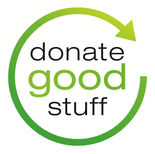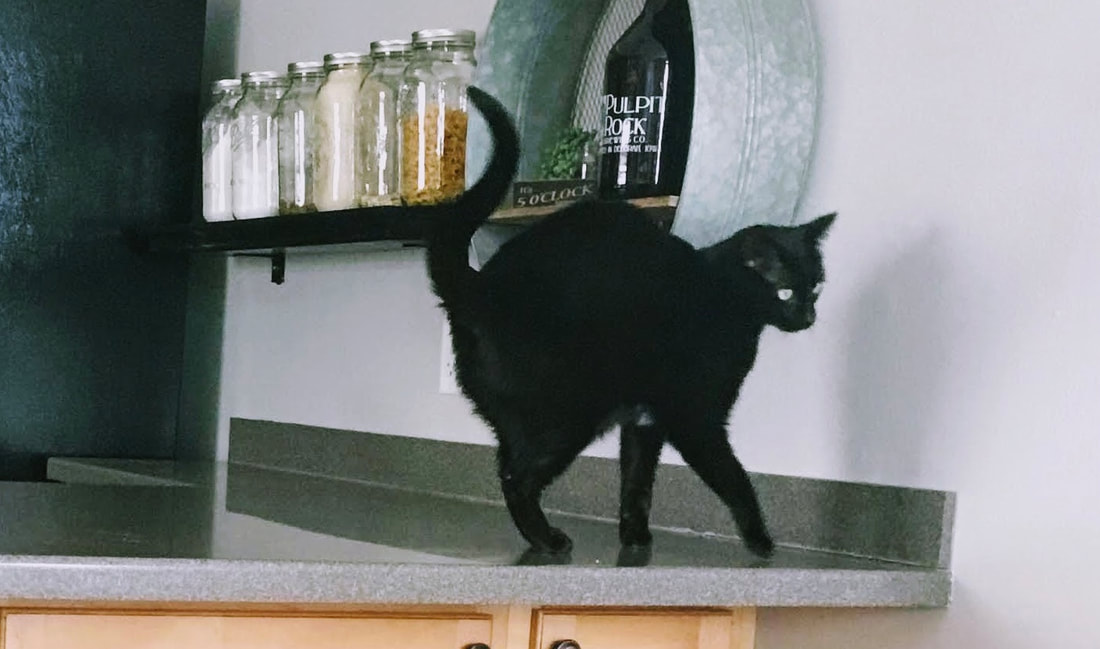|
If clutter is stress, it is no wonder minimalism is a hot topic. Decluttering is an important step (and has been happening with gusto throughout the pandemic) but what about Amazon home-delivery-fueled ‘Re-cluttering’? People have been looking for inspiration and guidance to live more cleanly and simply so we wanted to talk to someone who is doing it. A Donate Good Stuff Board member sat down with a friend who is pursuing living minimally, to understand her journey, tips and advice for decluttering. Tara Meade encourages others to invite into their lives that which brings them joy. She has found joy throughout life as a musician, flute instructor, world traveler, and lover of learning. Her philosophy in teaching, and in life, is that “cultivating joy in oneself is a prerequisite for bringing joy to others, which when replicated, has the potential to do infinite good.” Now, on her journey of minimalism, Tara continues to cultivate joy through thoughtful curation of her life and space and giving herself permission to prioritize what's most important to her. Getting StartedWhy did you start pursuing a minimalist lifestyle? Most of my life I was a messy person. Clutter suited my personality and spirit when I was busy. I started exploring minimalism when “Tidying Up with Marie Kondo” came out on Netflix. I enjoyed the show, it was entertainment. About the same time, I was finding myself unsatisfied in my work life and relationships. I began questioning, who am I? What are my values? Initially, I didn’t connect my dissatisfaction to the state of my physical space. But as I began manipulating my physical space, I felt a sense of control. So initially, minimalism was an outlet to exert this control that I lacked in other areas of my life. How Did You Start?My first project was a 30 day challenge. Day 1 you part with one thing, Day 2, you part with 2 things, Day 3 you part with 3 things and so on until at day 30 you part with 30 things. I was surprised at what I could get rid of and that it was more achievable than I expected. Especially since I am sentimental and typically it’s hard for me to get rid of things. How have you continued to live a minimalist lifestyle?Most people think of minimalism as getting rid of stuff. That’s only the first step. A true minimalist lifestyle is about being mindful about what you bring into your life and what you consume. When I bought and moved into my first house, it gave me a new space to continue to explore how I manage my stuff. I hold onto things that I feel good about. I bring things into my house that spark joy. Additionally, my consuming habits have changed. Rather than looking at price, I look for quality. Things I can enjoy for a longer period of time, which has resulted in purchasing fewer things. When you got rid of things, where did they go? When I first started, most of what I got rid of went in the trash, except for clothing. The clothing I donated to Goodwill. Why did you donate to Goodwill? [Goodwill] was the most convenient and I didn’t have to think about it. What resources did you wish were available to you when you started? A clear answer to what to do with the stuff that shouldn’t go into the trash. It can be paralyzing, when you want to recycle an item or you believe you have stuff that could still be used, but you don’t know where they should go. (Now there is DonateGoodStuff.org for that! And the more we share knowledge about sustainable tools, the bigger the impact.) What advice do you have for someone who wants to live with less stuff?Start with one category and don’t set a number goal. Rather think about you want to feel when you’ve reached the ideal amount of things in that category. I recommend clothing. Clothing has an intimate relationship with us because we wear it on our bodies and we tend to attache feelings and memories to it. What’s the most unique or funny thing you’ve found while decluttering? Rediscovering old photos has been fun. Decluttering physical photographs was challenging. Took a while - a pandemic weekend :) They were fun to look through, being that many photos were taken on a disposable camera. It wasn’t hard to find the photos that sparked joy. But it was hard to part ways with the photos that didn’t spark joy. So I collected photos I didn’t want but had friends in them. I mailed 20 or so photos to a friend who is also a minimalist, and gave her permission to view them, enjoy and throw them away. For the photos I kept, I put them on my bookshelf and now they are easier to enjoy. What’s been the biggest learning on your minimalist journey? I’ve been on this journey for 3 years and in this time, I’ve learned to trust my gut. I’ve become good at decluttering physical things and now can take those practices to other areas of my life. This practice has helped me become a more decisive person. How has it made you more decisive? The Marie Kondo method asks that you hold something in your hand and feel the energy. I ask myself does this object feel good, physically, mentally and emotionally? I also use this method for my mental space as well. I am able to determine more quickly how I feel about a decision and let go of preconceived notions that might overpower my gut feelings. How has minimalism reshaped your buying habits? I am very thoughtful about what I purchase. As I said earlier, I no longer focus on a bargain. Rather, I focus on an item's quality and ask myself, is this something I’ll use for a while? I also try to purchase second hand when possible. I’ve also learned to repurpose items. If I have a connection to something and it sparks joy, but isn’t currently serving a purpose I consider if I can use it in another way. If things are going to otherwise sit in a box, I try to make a point to use them. I found a weaving I made in 5th grade which I now use as a coaster. Also, I no longer hold onto special things back to save them for a special occasion. Instead, I use them because they bring joy. What is the most extreme thing you’ve done to live more minimally? After reading the book “Digital Minimalism” by Cal Newport, I did a 30 day digital detox. Digital spaces can create a lot of unacknowledged clutter and anxiety. Over many months I was able to declutter my inbox, user names/passwords, and apps on my phone. Over the course of a year I was focused on using my smart phone less, so when my smartphone broke, I took the opportunity to downgrade my technology to a flip phone. It’s been easier than I thought living without a smartphone. What’s next for you on this journey? The next step for me is to minimize my plastic consumption. Recognizing everything I bring into the house eventually has to go out of the house. I want to focus on packaging and how to buy things with less packaging. Primarily for me this is in the form of food packaging. So I am paying more attention to packaging and how to be thoughtful about the types of food packaging I purchase. What resources do you suggest for people who want to learn more about decluttering and minimizing their stuff? There are a lot of books on these topics, here are a few of my favorites:
Anything else you’d like to share? It’s critical to share your newfound habits with others. Oftentimes, we can feel helpless living on a planet plagued by overconsumption and wonder what can one person accomplish by living more mindfully, minimally, and be environmentally conscious? You become more empowered when you share your experience. You influence others and can exponentially expand your reach, by sharing. We are grateful to Tara for her time and sharing her experience. We hope you are inspired, like we are, to be thoughtful about our physical spaces. As always, when you have things to donate, visit DonateGoodStuff.org to find the best home for your donations.  Donate Good Stuff exists to help you find the best home for your donation items and we recognize it's just part of the challenge of having too much stuff. How do you declutter what you have, reduce the amount of stuff you bring into your home, and continue to move toward sustainable and environmentally kind living? We can help with that, too. Follow us on Facebook, Instagram, or subscribe to our newsletter for regular tips and creative ideas for managing your stuff, reducing waste, sustainable living, and being part of a connected community. If you enjoyed this article and appreciate Donate Good Stuff's interactive search, we appreciate any size contribution. We exist because of generous donors like you. Donate Here Author Leah PatnodeLeah Patnode is a contributor and board member of Donate Good Stuff
1 Comment
3/16/2022 06:06:29 pm
I believe that the real joy you can have is by making others joyful as well. It is a joy in your heart that you do not understand but it is extreme.
Reply
Leave a Reply. |
Recent PostsCategories
All
Archives
June 2024
|
Copyright © 2024 - Hero Management, Inc








 RSS Feed
RSS Feed